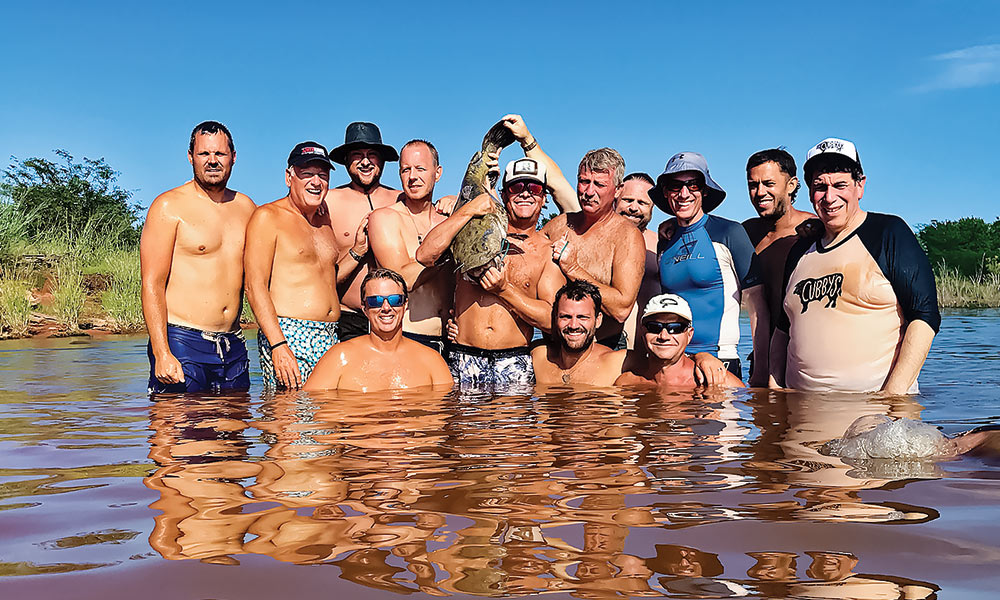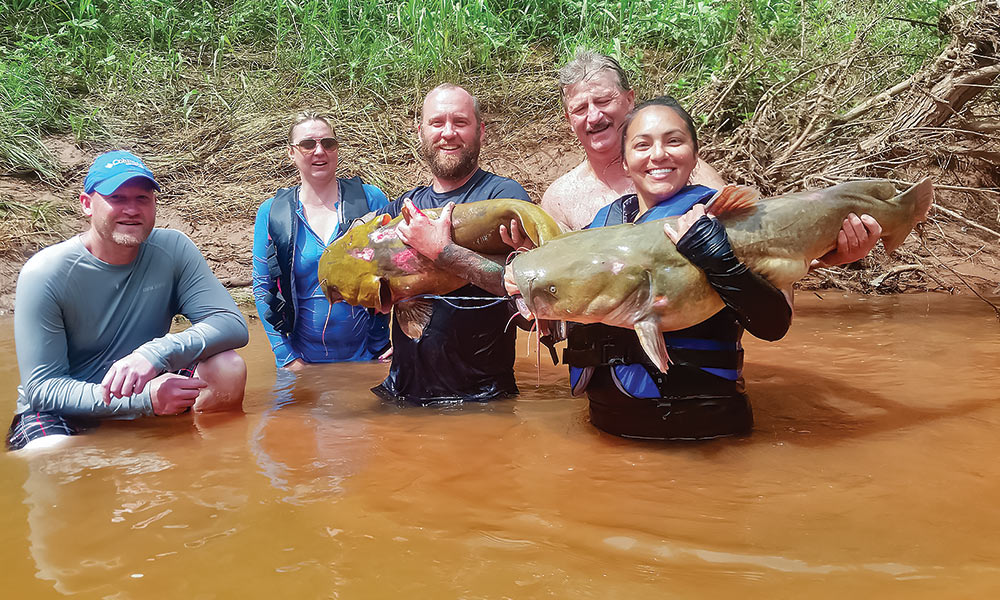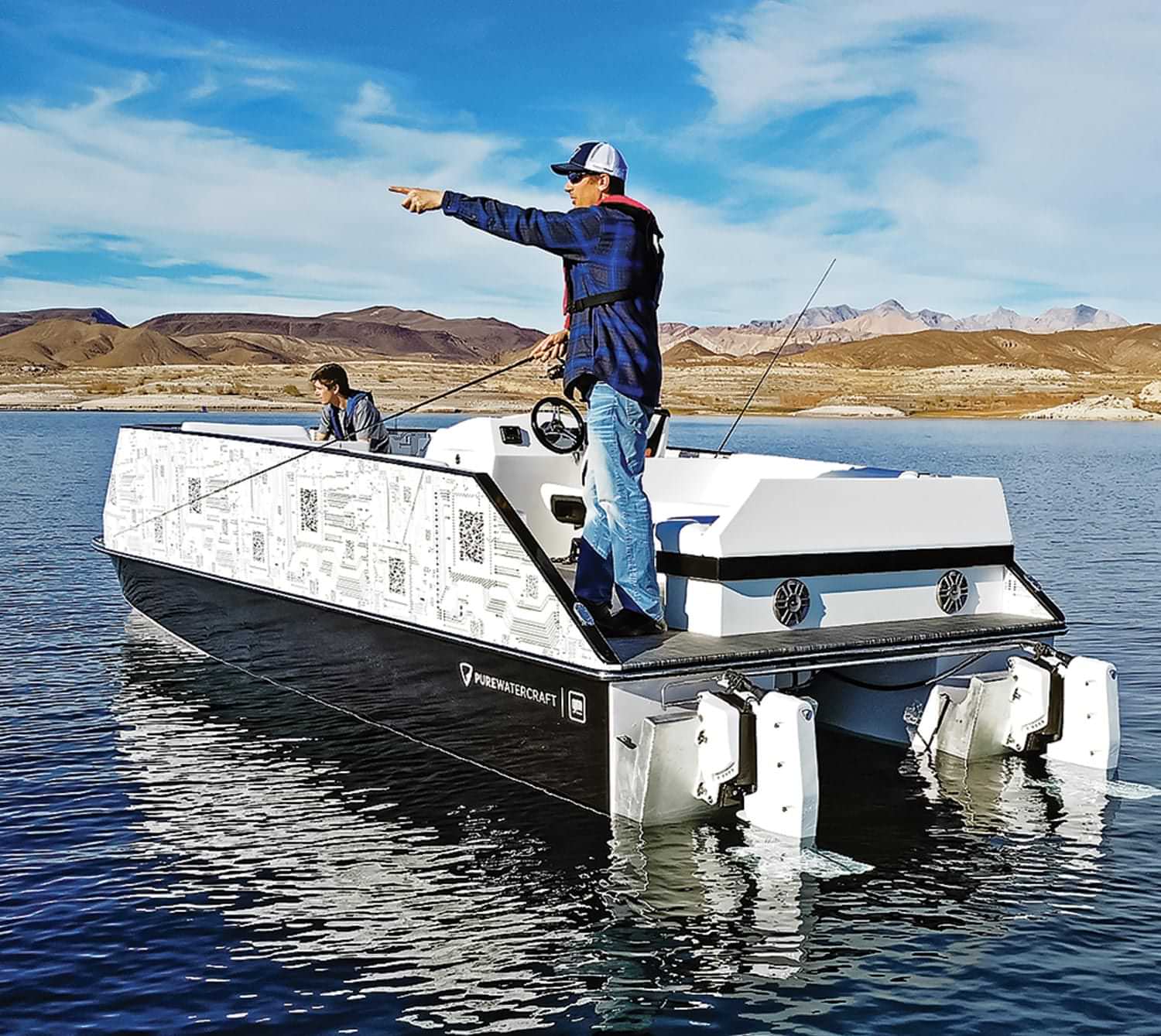Unusual Angling Around The World



By Dan Armitage
ost of us fish with a rod and reel. However, there are other methods for putting a fish on the stringer, some going back centuries and still practiced in diverse fisheries around the world.
Close to home, there are those who “noodle” or “hand fish” for catfish. I featured the technique in the June issue of PDB, explaining how folks use their feet and hands to feel around the bottom and banks of lakes and rivers searching for big catfish that have holed-up in undercut banks, under rocks and ledges, or in barrels sunk and strategically placed for the purpose. Some cats frequent these holes for protection and as ambush points; other lay their eggs there and the catfish hover over the nest guarding the eggs. A hand with wiggling fingers (hence the term “noodling”) presented in the face of a sedentary catfish often results in its clamping down on the hand, allowing the noodler to grab the bottom jaw and lift the fish from the water and flop it on the deck of a boat or the bank. And yes, noodling is dangerous and forbidden in most states.
On the other side of the world, anglers in China since the seventh century have employed trained live otters to help them catch fish. The tactic has been documented in parts of Europe and India as well – to this day. In the fifteenth century, trained otters were used to drive fish into nets. King James I of England, who reigned from 1603-1625, was said to have kept otters for fishing.
Similarly, dogs are used to catch fish on the Japanese island of Hokkaido. There, two teams composed of up to 30 dogs each are positioned at a distance from each other on the shore and, on signal, swim out into the sea. At another signal, the two groups of swimming dogs approach each other and head back to the shore, driving any fish toward shallow waters where they are captured in the maws of the incoming dogs which fetch the fish for their masters.
Remora are a saltwater fish with a suction disk on their heads that allows them to stick onto larger fish and feed on any remnants of their host’s meals. Fishermen in Africa catch the remora, tie a line to the fish and release them back into the ocean where the remora seek out a larger fish to adhere to. When the remora attaches to a target, the pair are pulled back in by the fishermen, the “suction fish” still clinging to its host.
In Cambodia, local fishermen use fish eggs spread out across the water to attract fish to a spot and then add soda and toothpaste or other minty substances to the waters. The combination releases carbon dioxide, which suffocates and forces the struggling fish to the surface, where they are collected by the fishermen.
Similarly, in South America, locals collect special plants from the rainforest and extract their juices. When it’s time to fish, the extracts are poured into the waters of a likely fishing spot, where the chemicals react and deplete the oxygen levels, forcing any fish in the vicinity to surface and be collected by the crafty fishermen.
In a method similar to one that I witnessed being used by kids to catch fish and lobsters on the Cape Cod beach where I used to lifeguard, stone dams or basins are constructed in the littoral zone at low tide. When the tides are high, fish (and lobsters) can swim into the structures and then become trapped inside the rock confines when the tides recede. Anglers worldwide also construct elaborate stone dams in freshwater lakes and streams that lead fish into a maze from which it is hard for them to escape before being plucked from the waters by the creative anglers.
In China, at night fishermen aboard boats secure a large white-painted board to the gunwale and set it to rest at a 45-degree angle to the water’s surface. Although it’s not clear why, upon seeing the board, some species of local fish try to leap over the board and end up in the boat –and eventually on the anglers’ dinner table.
Asian anglers for thousands of years also have used cormorants to catch fish. The large, fish-eating waterfowl are trapped and tamed by the fishermen, who place a loose-fitting ring around the bird’s neck, which is attached to the boat with a long line. The tethered fowl are released into the waters around the boat, where they grab fish in their toothed beaks but are unable to swallow any but the smallest due to the constriction of the neck ring. The angler pulls in the bird with the fish in its bill, removes the catch, and releases the cormorant back into the water to find another fish. Years ago, there was a team of such anglers from Japan who traveled the U.S. during the winter boat show season demonstrating the tactic in a traditional boat floating atop a portable swimming pool set up for the exhibitions – which drew big crowds. The technique is so productive that there is a limit of ten cormorants per angler enforced on some Asian waters where the method is popular.
In Great Britain, people tramp for flounder. It’s a simple fishing technique that involves walking through shallow coastal waters where flounder flourish. When a flounder is found lying flat to the bottom, which the flat-sided fish often do, the angler steps on it, pinning the fish to the bottom until the flounder can be grabbed by hand, giiged or netted. Tramping is so popular in Scotland that the nation annually hosts the World Flounder Tramping Championships.
Here in the states, traditional rod and reel surf anglers looking to be one with the fish go “skishing.” Developed by anglers in Montauk, N.Y, skishing is a way of fooling and fighting fish on their own turf by swimming out into the surf with a rod and reel in hand and casting while treading water. The name comes from the combination of fishing and skiing that results when a large fish is hooked and hauls the swimming angler around Nantucket sleigh-ride style.
Then there is drone fishing. The popular remote-controlled aircraft are used to both scout waters for baitfish and gamefish when fitted with a camera and to take baited lines away from the shore or boat and remotely drop them into the drink when the drone hovers over a likely looking spot. Drone fishing is illegal in much of Australia, as well as some parts of the U.S. In some instances, using a drone for surveillance is allowed, but dropping baits or actually catching fish with one isn’t. So, before you launch a fishing drone off your pontoon or deck boat this season, check your local fishing regs!

General Motors Pure Watercraft Pontoon
Since we are discussing unusual fishing methods, I thought I would “pick” an unusual pontoon boat to feature. Pure Watercraft was founded in 2011 by Andy Rebele who set out to make boating quieter and cleaner by putting an electric motor in a used 21-foot Cobalt he bought on Craigslist. Over the past decade the team he put together developed an outboard motor and battery system that wowed bass fishermen and set the record at the Electric Boat Association of America’s Wye Island Challenge. Pure Watercraft’s most recent entry is an electric-powered pontoon boat that I would absolutely love to take fishing! The obvious advantage of this boat to anglers is the all-electric power, which makes for silent trolling and the ability to sneak into coves and over reefs without sacrificing deck space for aftermarket electric trolling motors and battery banks to power them.
You’ll need to get in line for these boats though, for demand is high. But the payoff is a clean, green, silent-running fishing and cruising machine.